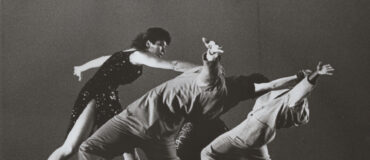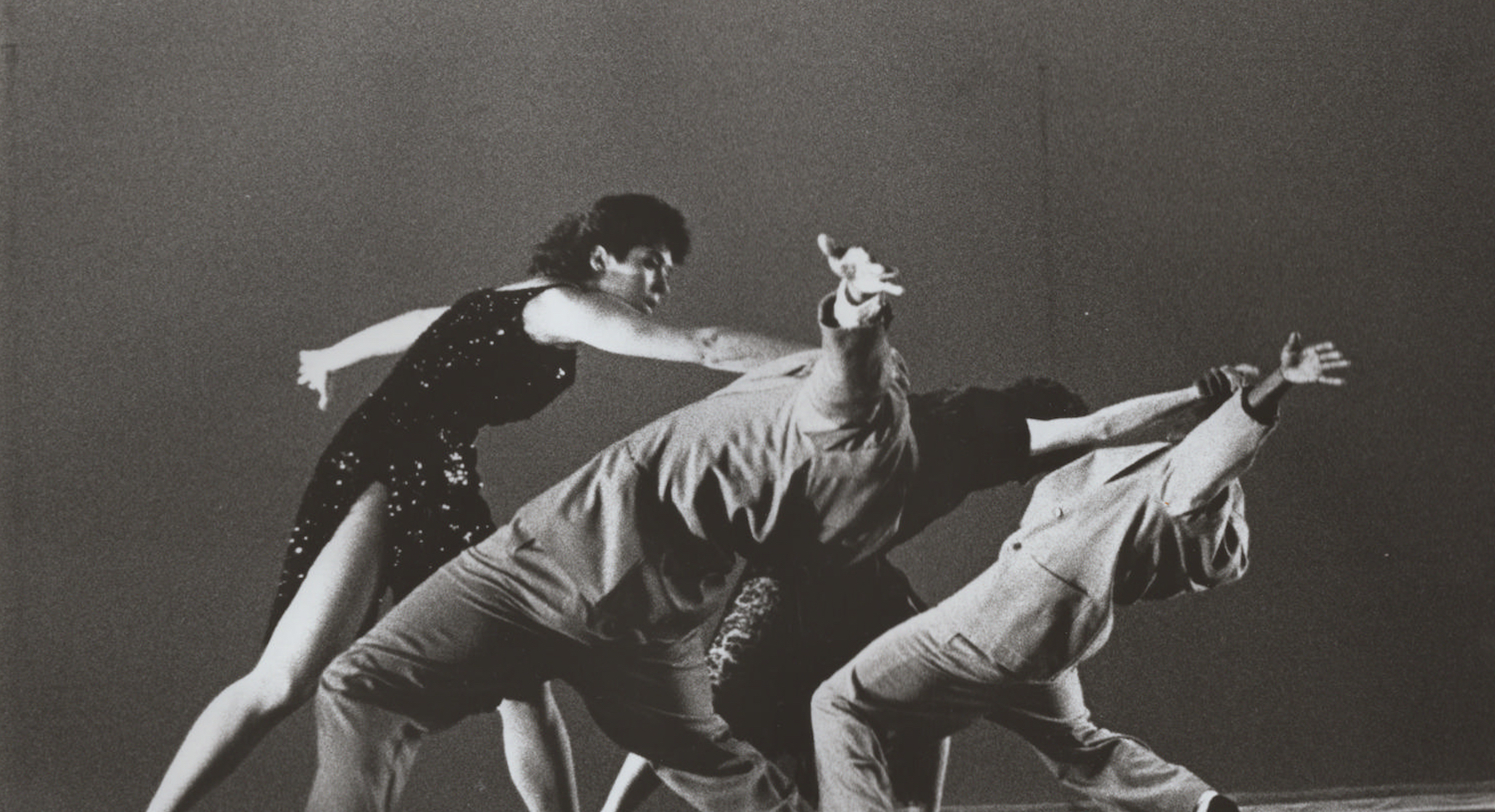By Daina Coffey
Daina Coffey is Dance/USA’s second Dance Archiving & Preservation Fellow. Her Fellowship, which ran from August-December 2018, was hosted by the Chicago Dance History Project, and her practicum site was Joel Hall Dancers. Read more about the Fellowship program here and read her first, third, and fourth blog posts.
December 19, 2018: The Joel Hall Dancers Legacy Exhibit: Part 1
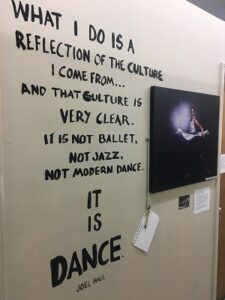
View of exhibit panel showing “Caliente, Por Favor.”
In October, for Chicago Open Archives and along with the Chicago Dance History Project (CDHP) team, I helped curate an analog exhibit for the Joel Hall Dancers and Center (JHDC). While I had some degree of experience with curatorial projects and exhibits, this was a major learning experience for me (and a fun one).
As Joel Hall, artistic director emeritus of JHDC, transitions into what sounds like a lovely semi-retirement (living part-time in Hawaii!), his dance studio is gearing up to perform the “Legacy Concert” in 2019. Our task at CDHP was to develop both an analog and a digital exhibit based on this concert, which includes a selection from one piece choreographed by Hall from each decade since the company’s founding in 1974 including, “Night Walker” (1979), “Caliente, Por Favor” (1985), “El Gato Negro” (1992), “Y2 Day” (2000), and “Anja: The Unexpected” (2015).
First of all, given the set up of this concert, it seemed natural that the physical exhibit should follow a chronological structure—taking the onlooker on a journey through each decade. Luckily, we had permission from JHDC to make liberal use of their walls, which opened up a number of creative possibilities for us. We ultimately opted to create a multimedia experience of each piece. In addition to photographs posted on the walls, we had videos and slide shows screening on three different types of monitors. We also included costumes and other ephemera, such as hats, masks, and a large Ankh that Hall had used for his performance in “Anja: The Unexpected.”
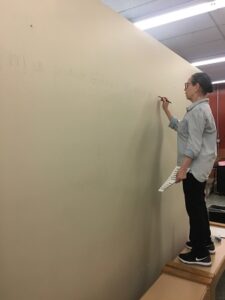
CDHP board member Elizabeth Liebman sketching out quotes for exhibit. 3.
Moreover, given that this exhibit was largely centered on Hall himself, I dug into the newspaper archives and located quotes from Hall recorded in interviews over the years. Our board member and resident artist, Elizabeth Liebman, then painted one quote from each decade across five different walls at the studio. The concept for the quotes was multifaceted. They served to contextualize each performance, giving the onlooker a sense of Hall’s mindset when he choreographed each piece. They also functioned as both a visual anchor and a thoroughfare—on the one hand, tying together all the documents in each section, and on the other hand, guiding the onlooker to the next piece in the exhibit.
Of course, we ran into problems. Some performances had more documentation than others, which initially seemed to limit our curatorial options. For example, in 1993, a fire at the School Street studio destroyed many of JHDC’s materials—including photographs, costumes, and videos—not to mention the dance company’s rehearsal space. The company also sadly lost their beloved studio cat named Civic.
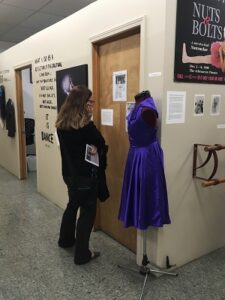
Visitor reading newspaper articles about the 1993 fire
As I worked on developing the “Caliente, Por Favor” section of the exhibit, I realized that, due to the fire, I only had one small candid photo of a curtain call and one large staged photograph. Rather than just simply post the few materials we had, we decided to explain the absence of the documentation by telling the story of the fire in our exhibit caption. We also posted a few copies of newspaper articles about the fire, which had devastated other artistic organizations as well. This was our attempt to engage the onlooker with the concept of an archive (see my next blog post for more discussion about this).
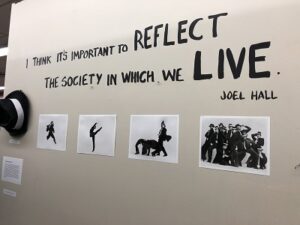
View of exhibit panel showing “El Gato Negro”All photos courtesy of Chicago Dance History Project and Joel Hall Dancers.
The exhibit itself was a success. Scores of people showed up, and we were delighted to see young dancers watching old VHS tapes of a 1985 performance alongside older dancers who had danced in that same performance. Dance students were thrilled to see the costumes and dancers from years past at their home studio. And members of the community, who were not dancers themselves, were happy to learn about the history of a dance organization in their neighborhood with deep Chicago roots.
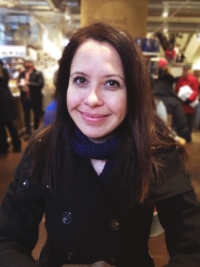
Daina Coffey is a Ph.D. Candidate studying U.S. history at the University of Chicago, where her teaching and research focuses on race, gender, and capitalism as well as urban and legal history. Deeply interested in digital preservation and records management, issues of accessibility, and curatorial practices, she has worked at a number of archives including the Bancroft Library at U.C. Berkeley, the Seaver Center for Western History Research at the Natural History Museum of Los Angeles, and the Special Collections and Research Center at the University of Chicago. Daina is thrilled to develop her archival skill set through working with local artists and dance-legacy materials at the Chicago Dance History Project this fall.
____
We accept submissions on topics relevant to the field: advocacy, artistic issues, arts policy, community building, development, employment, engagement, touring, and other topics that deal with the business of dance. We cannot publish criticism, single-company season announcements, and single-company or single artist profiles. Additionally, we welcome feedback on articles. If you have a topic that you would like to see addressed or feedback, please contact communications@danceusa.org.
Disclaimer: Opinions expressed in guest posts do not necessarily represent the viewpoints of Dance/USA.

